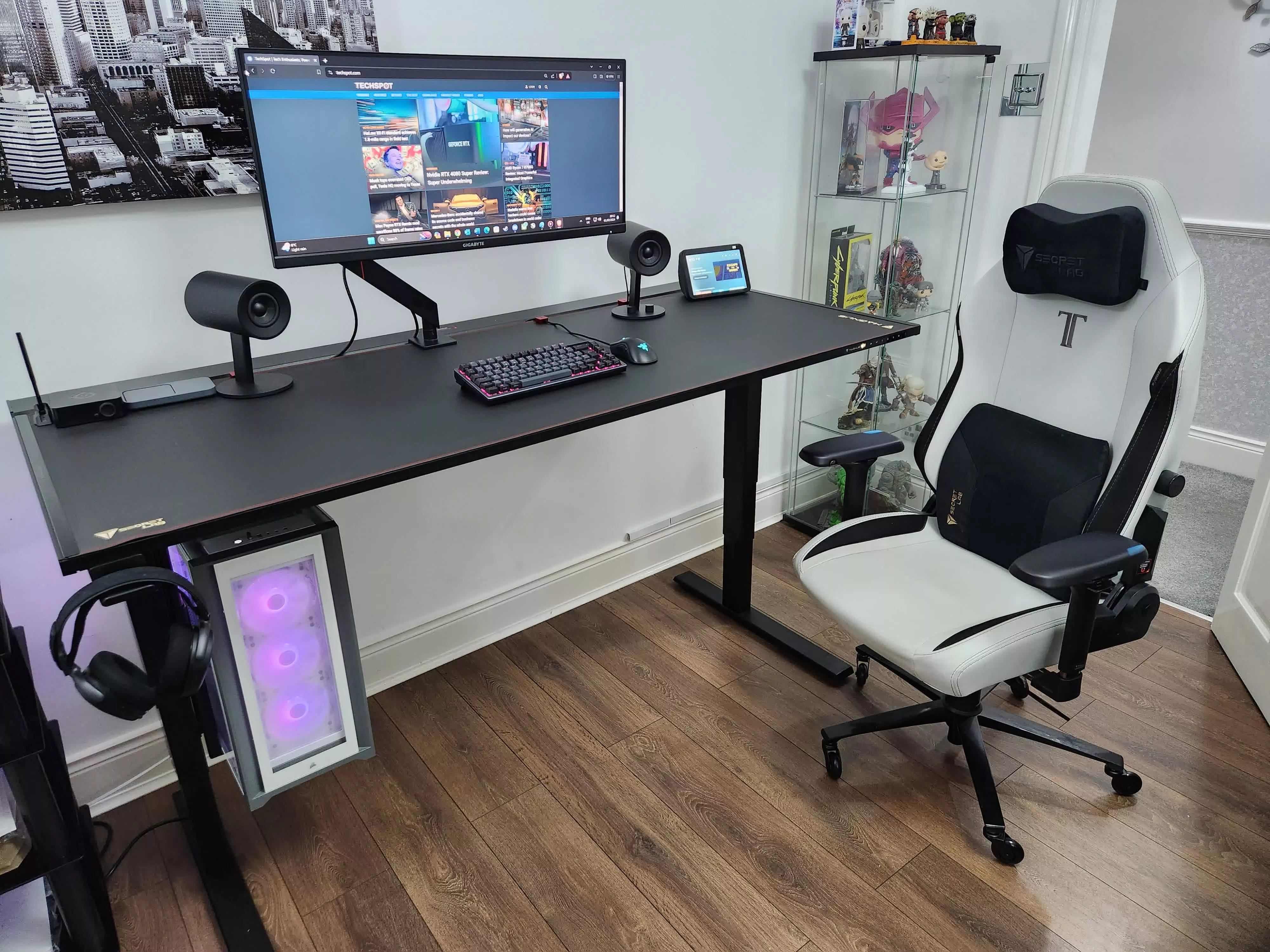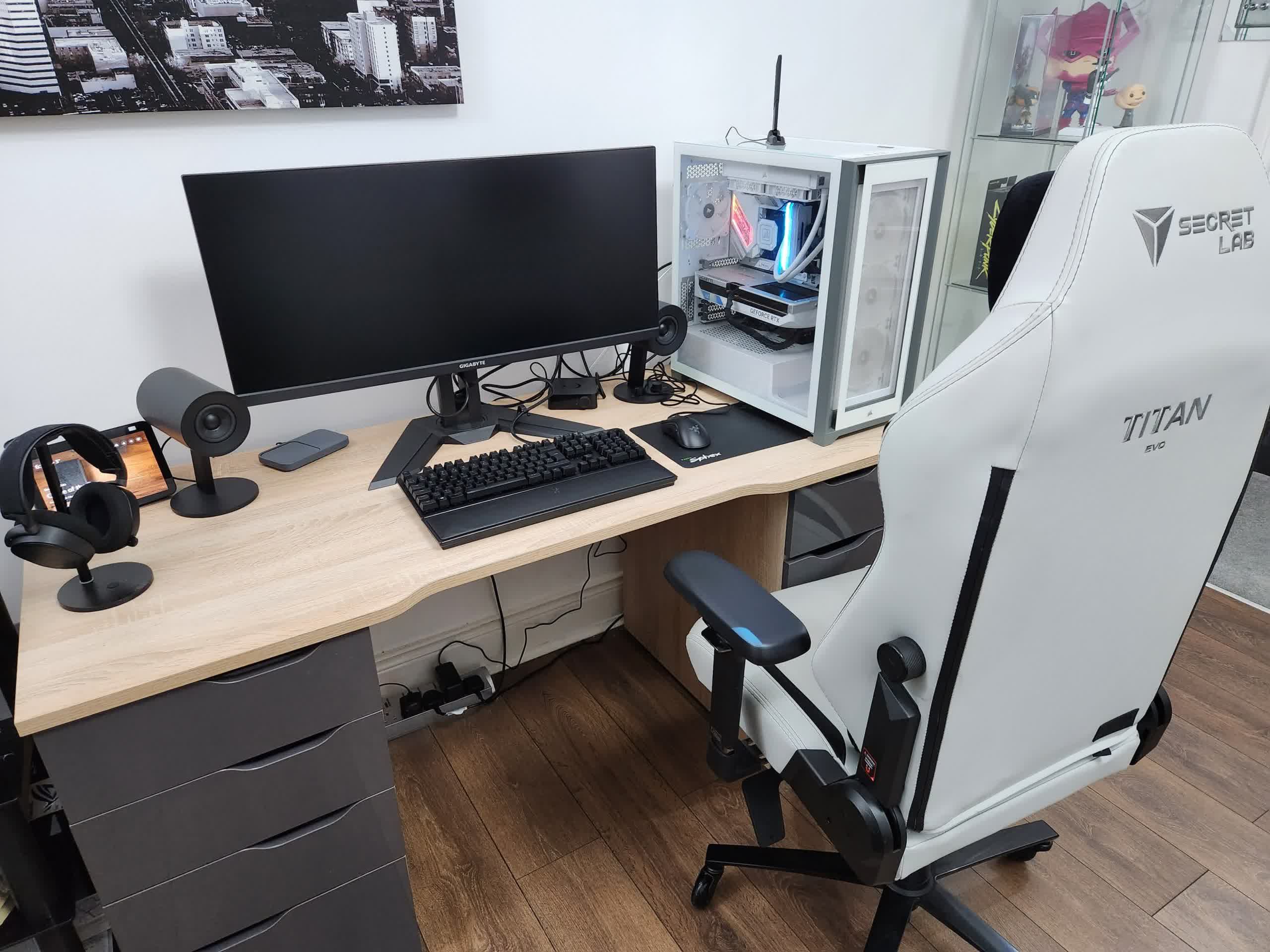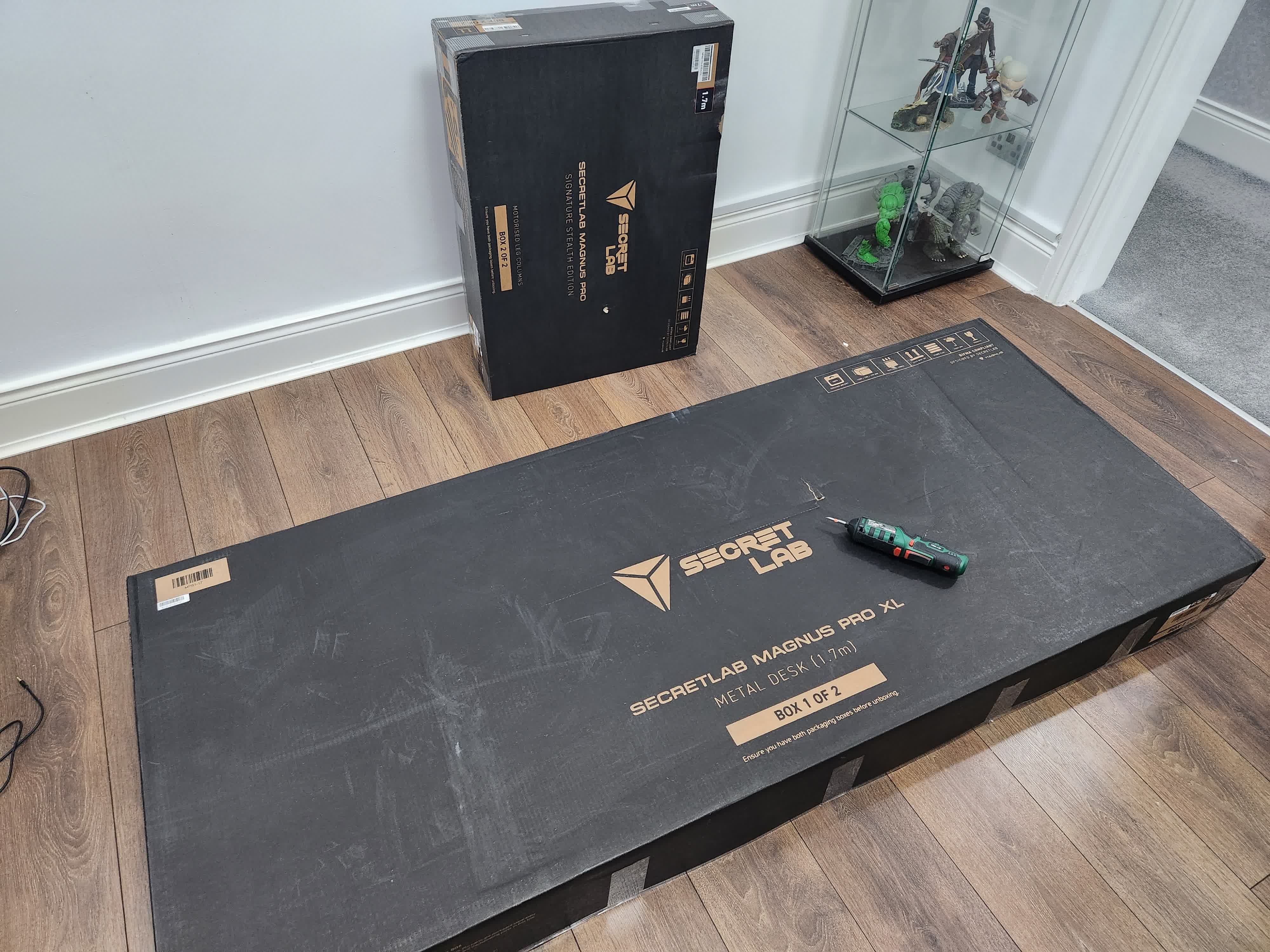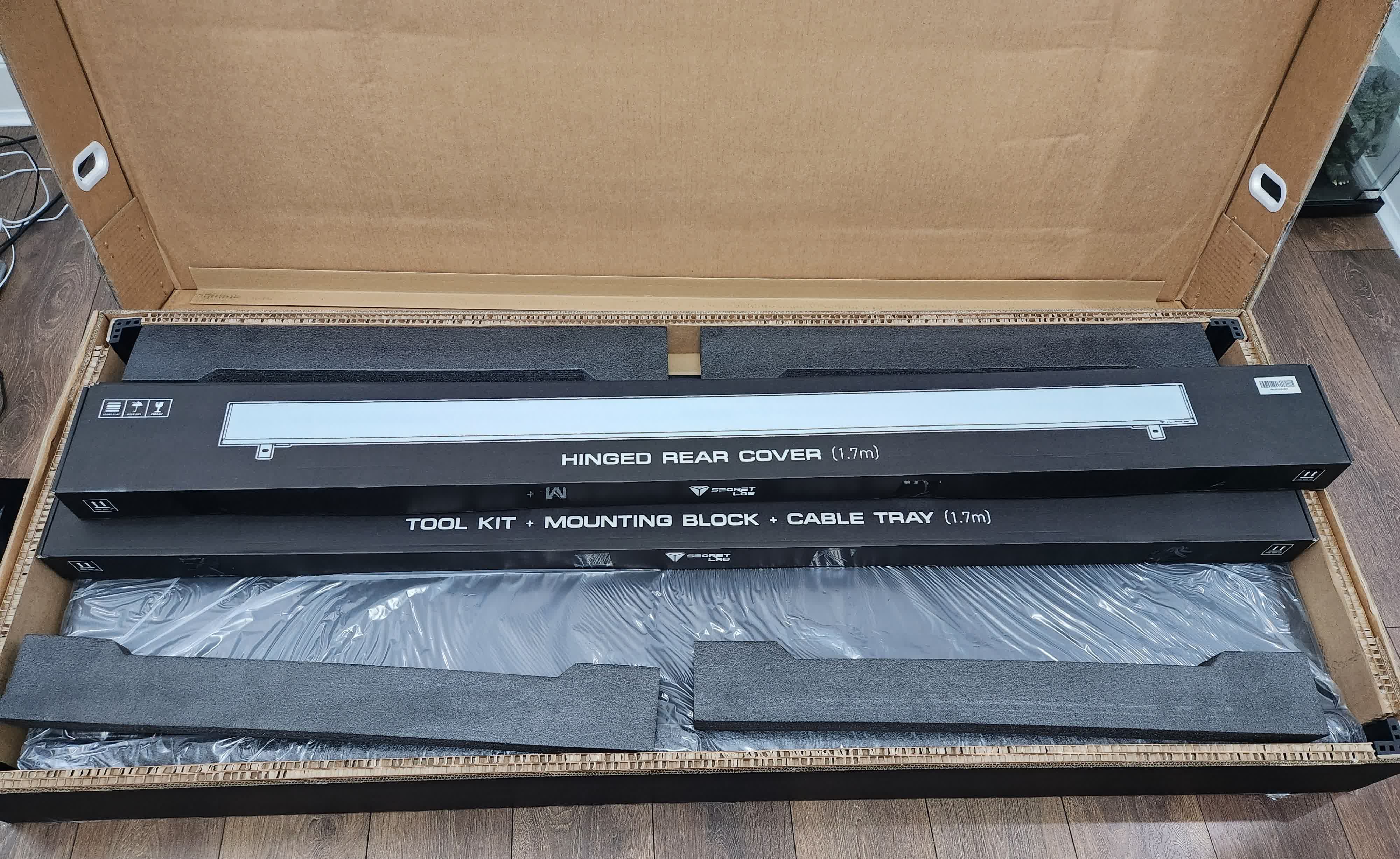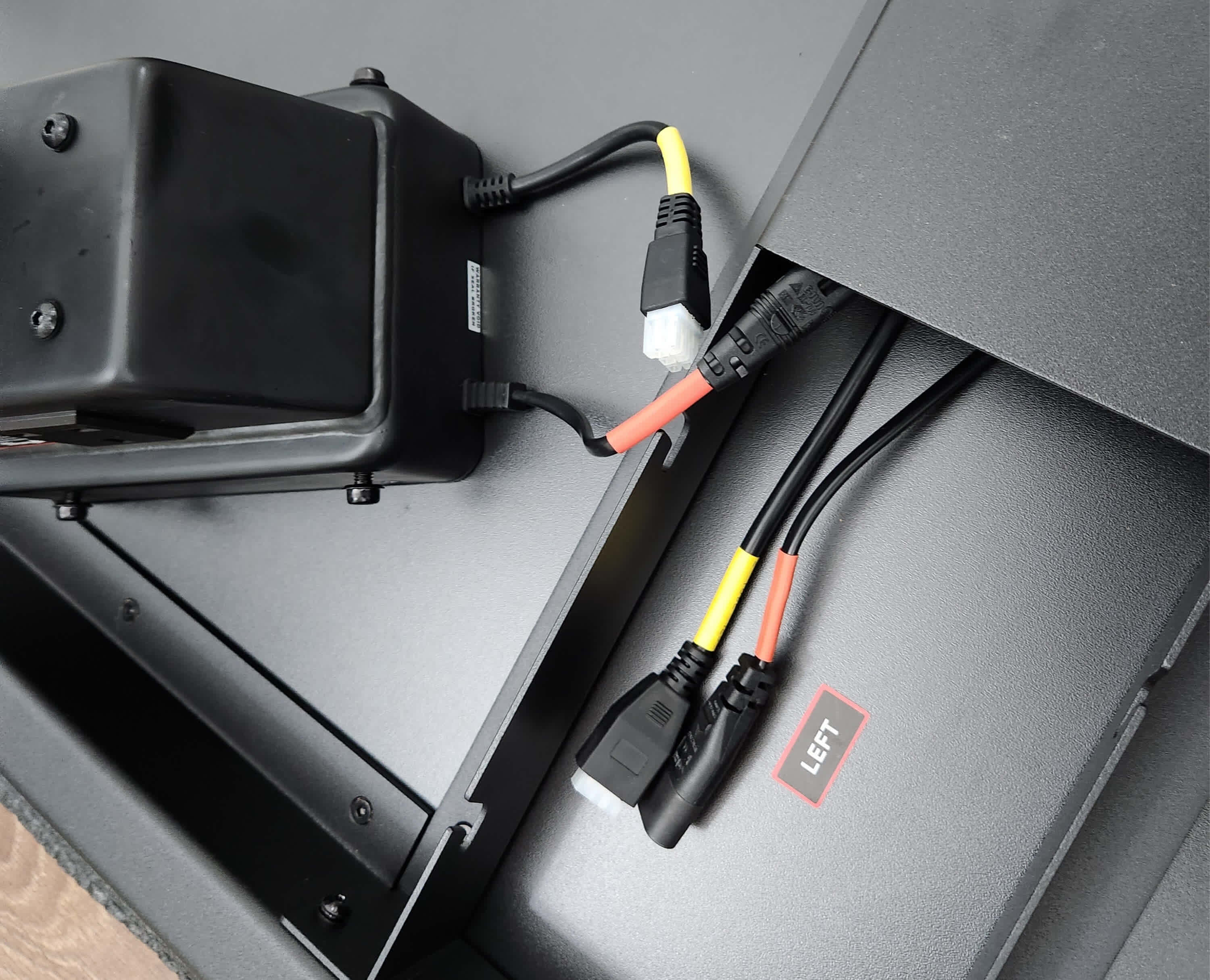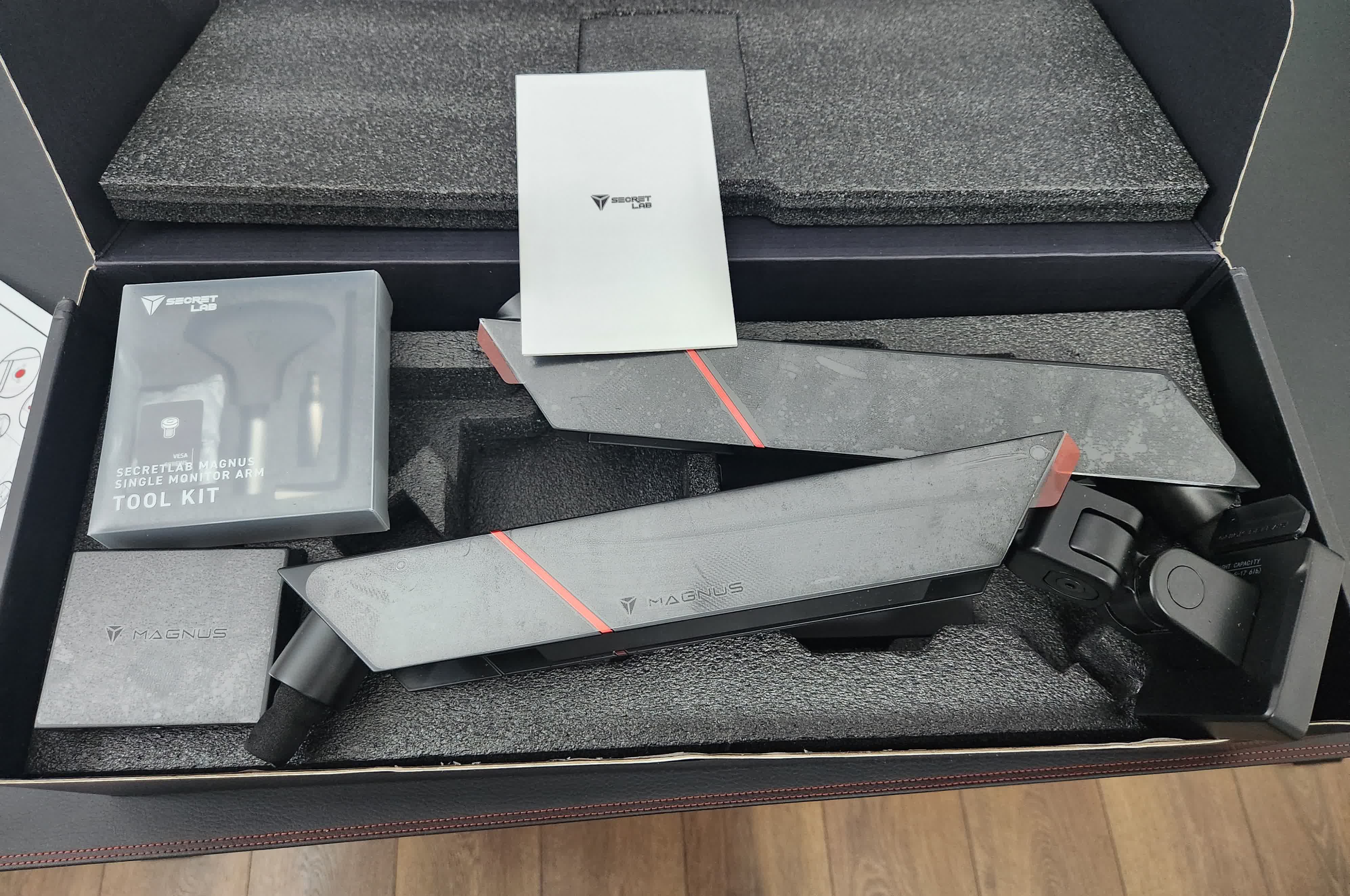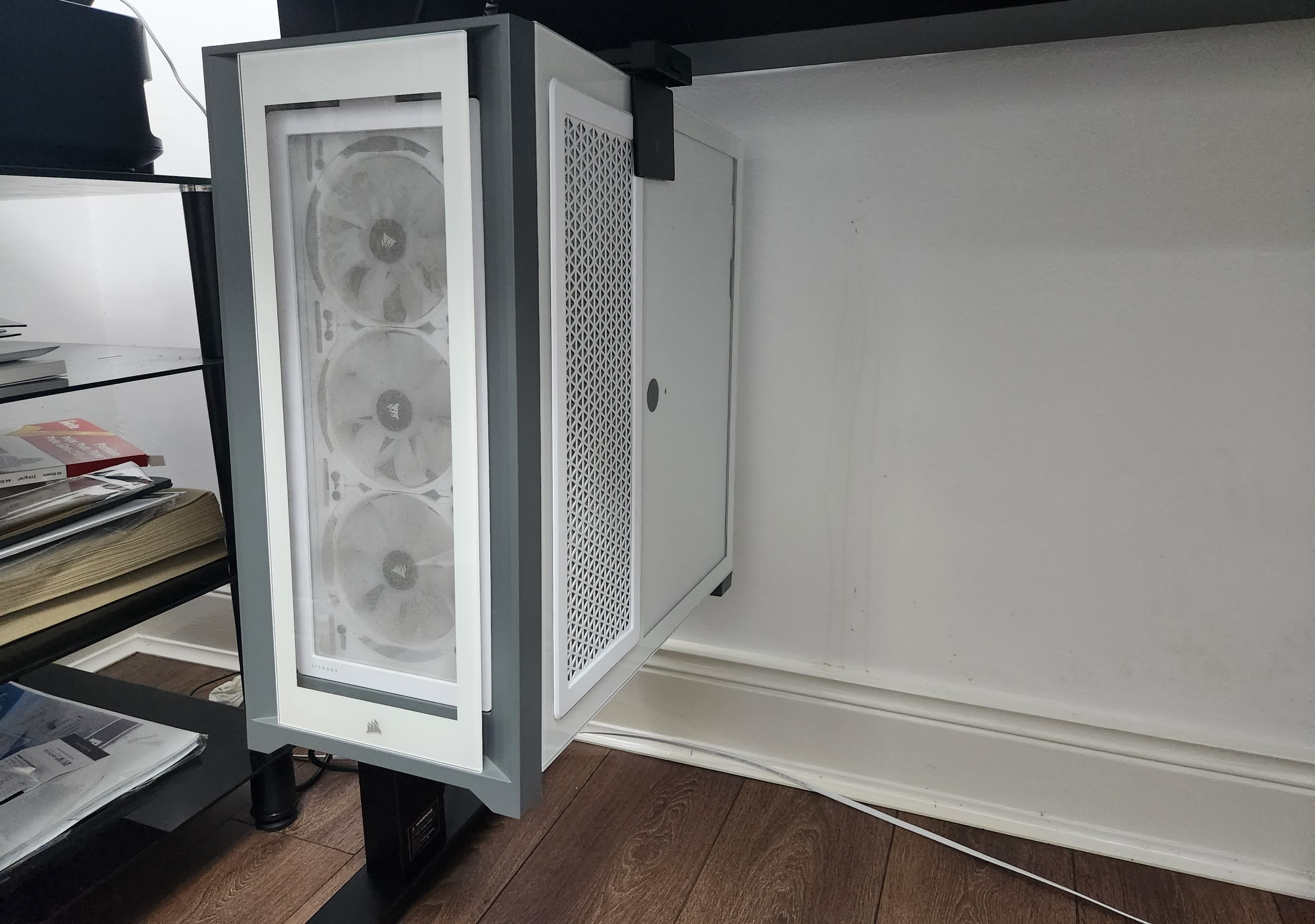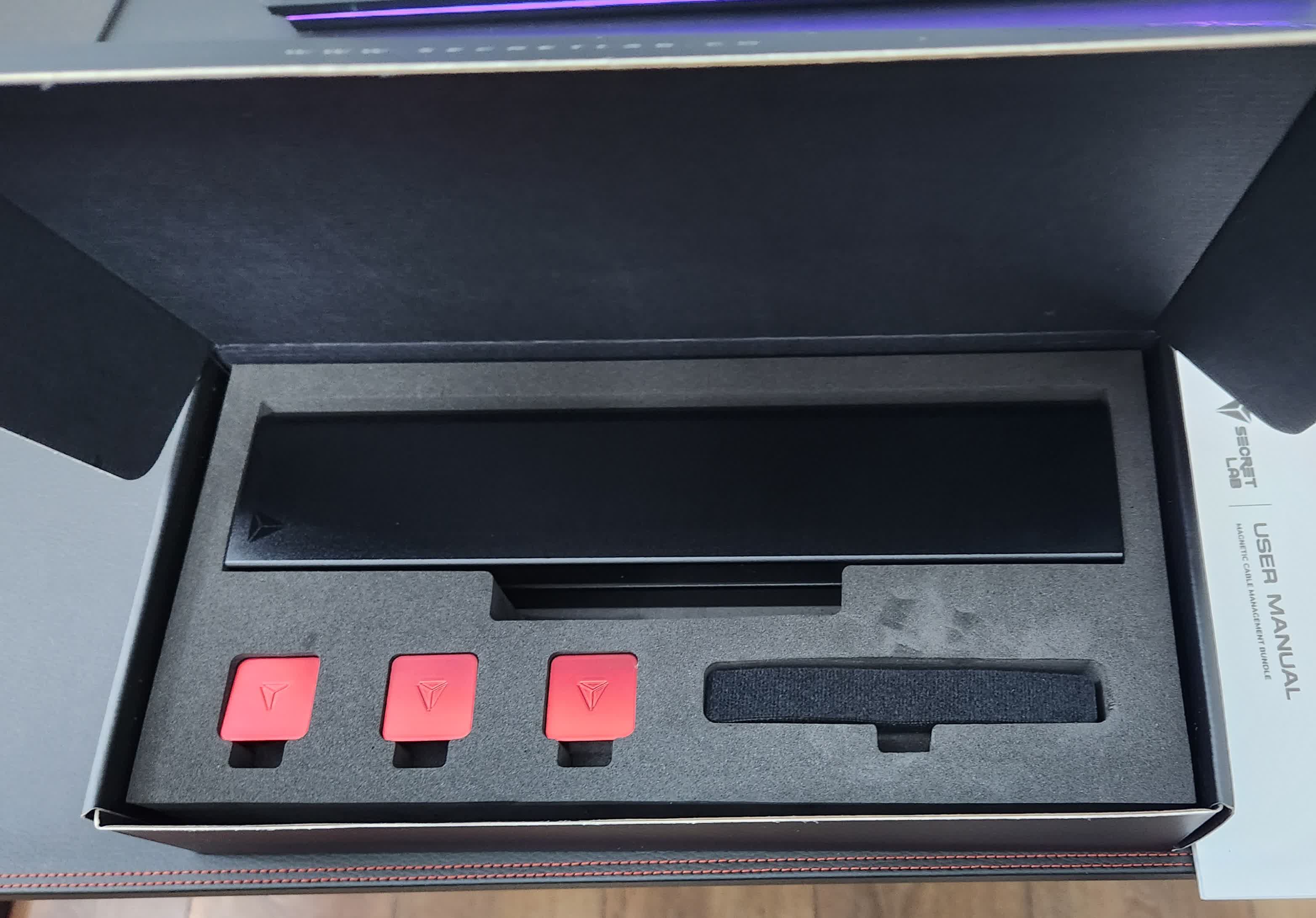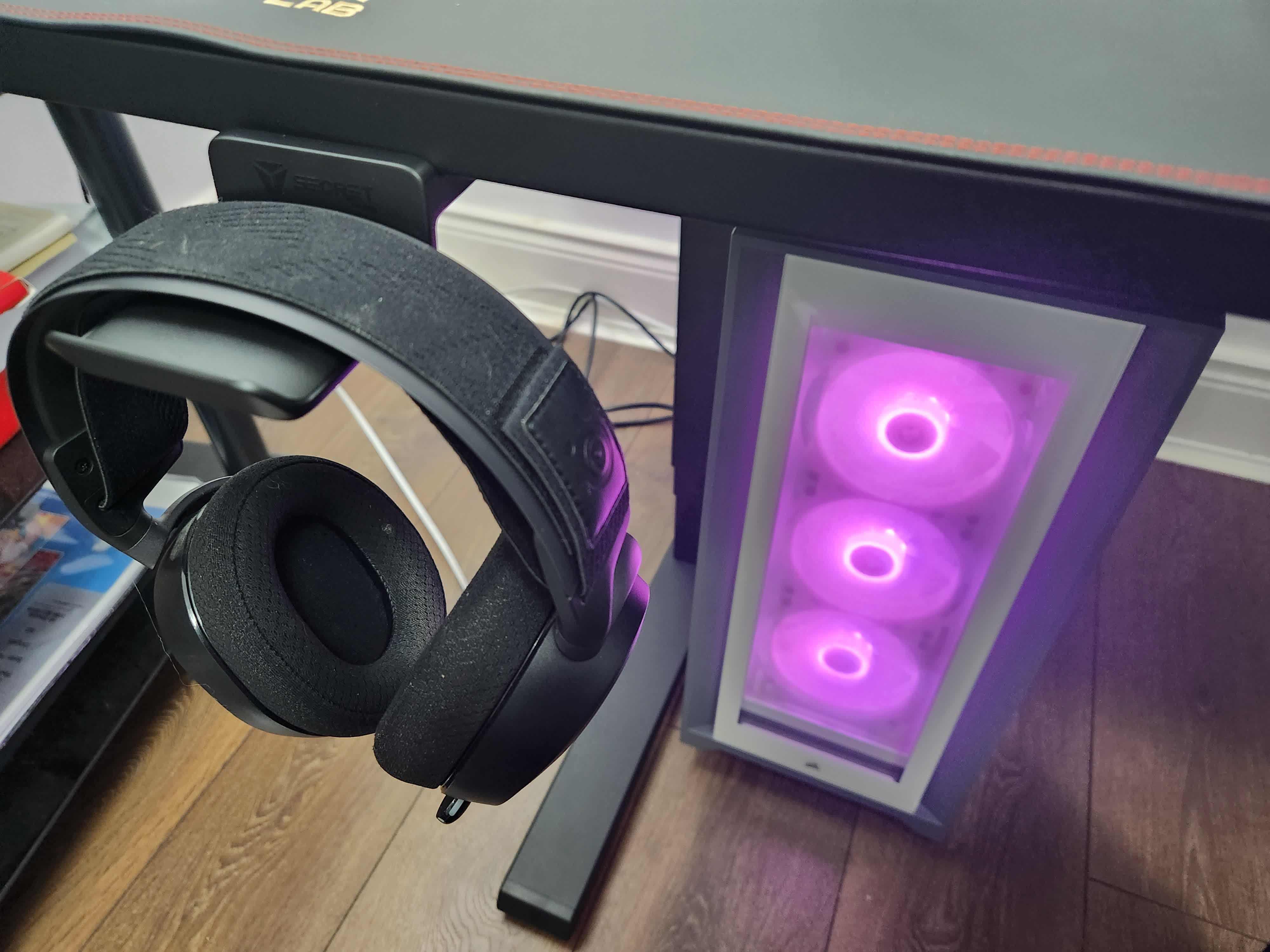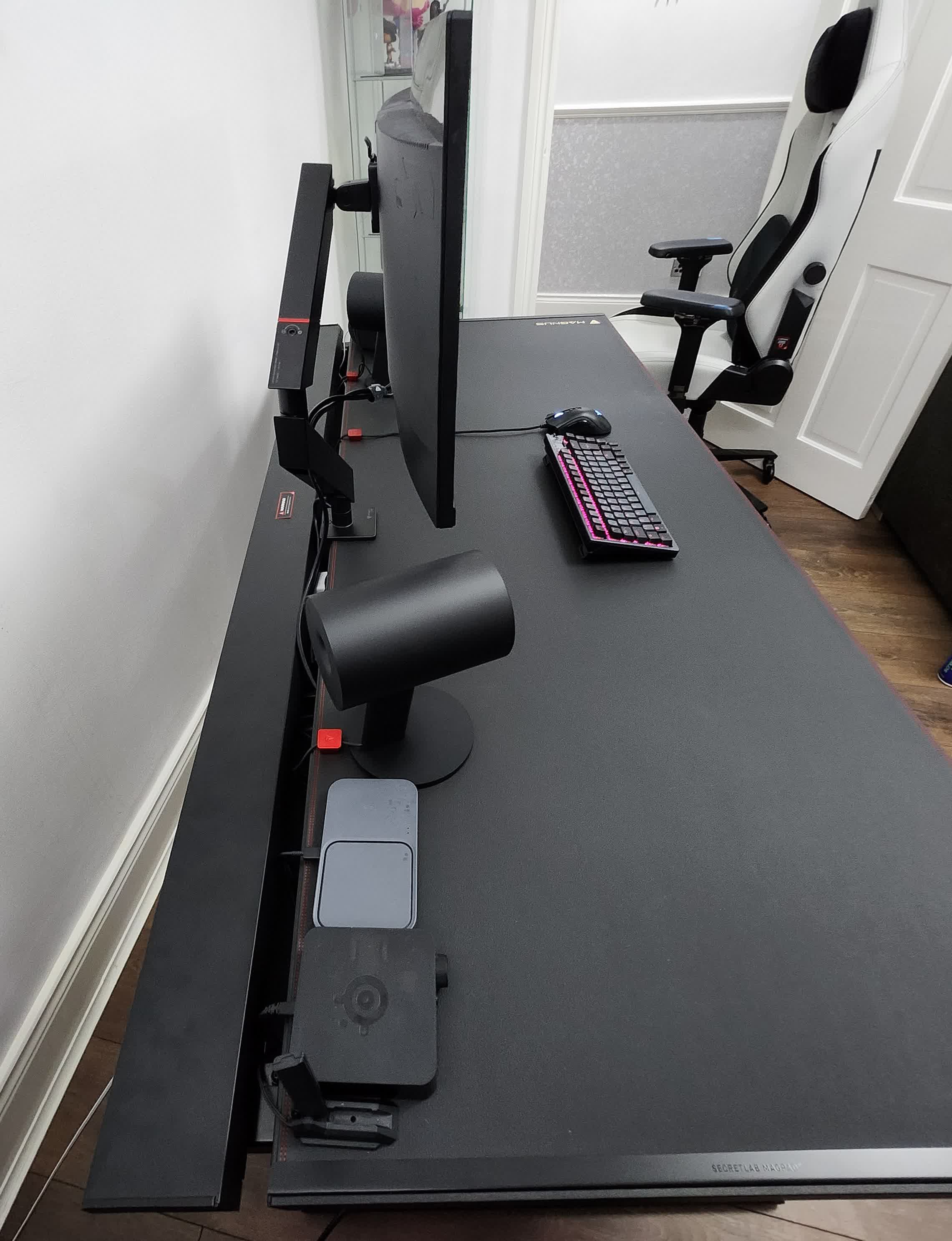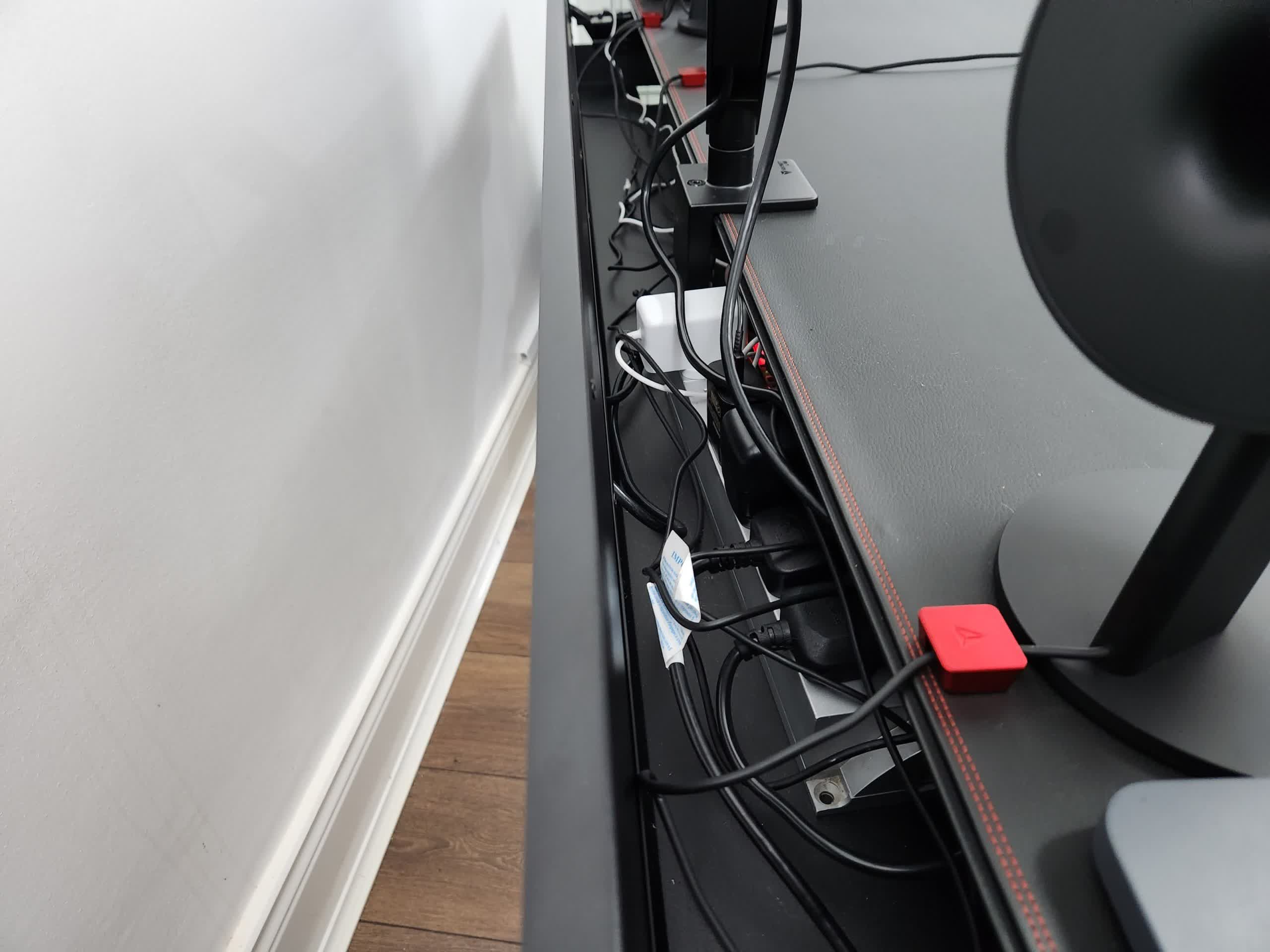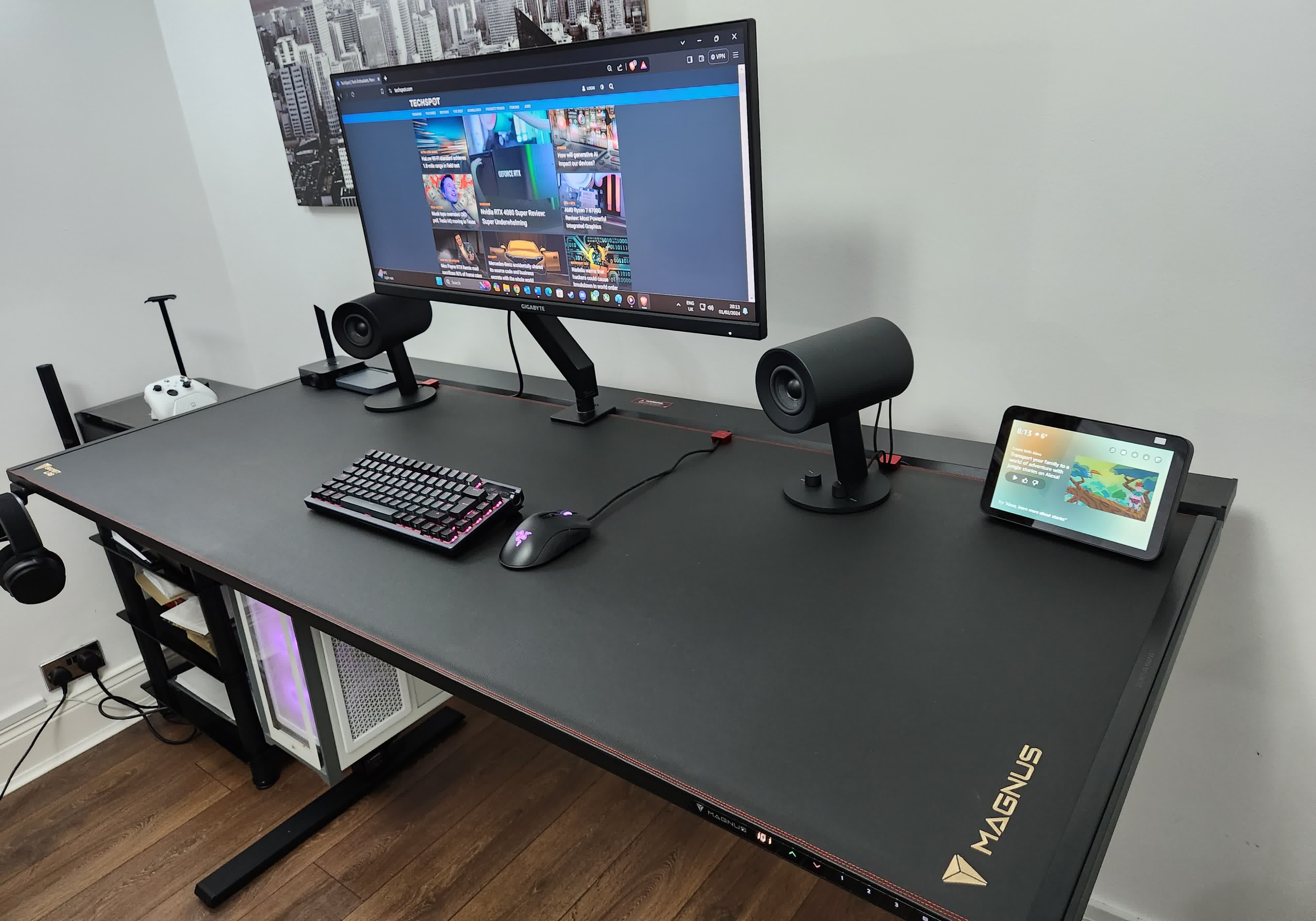Here's a confession: I've never liked the idea of a standing desk. I'm well aware of the health risks associated with sitting down all day and the claims that it's the new smoking, but to me, standing up while typing sounds as unappealing and unnatural as taking a bath with your socks on.
However, if there's one desk that could convince me to get off my butt, the Magnus Pro could very well be it. Developed by Secretlab, these are the same guys that make my favorite gaming chair, the Titan Evo. It desk looks amazing, with some nice cable management features and accessories, and it's an electric sit-to-stand desk, meaning you're not forced on your feet all day, so moving between positions comes as easy as pressing a button.
Secretlab has a reputation for making premium gaming chairs with price tags to match. This desk is no different. The standard 59.1-inch by 27.6-inch model is $799, while the larger 70-inch by 31.5-inch XL version that I'm reviewing is $949 – and that's without accessories such as the desk mat and monitor arm, all of which cost extra. Could a desk and some extras be worth more than an RTX 4080 Super? Moreover, can a standing-desk skeptic like me be converted?
To reiterate, that price is just for the desk, but I've opted for some extras. One of these is a desk mat, which is like an enormous, luxury mouse mat that covers the entire surface. There are several available in various designs, including Cyberpunk 2077, the Dark Knight, and Assassin's Creed. I choose the Signature Stealth, now reduced to $49.
The monitor arm, available for single ($149) and dual ($249) monitor setups, might not be a necessity, but the amount of movement it offers and how clean it makes everything look is great. I also went for a $29 headphone holder, a $49 cable management bundle, and the $89 PC mount. That last one is definitely an interesting option.
The Current Setup
My current desk is old. Bought from Ikea about a decade ago, its sturdiness is failing, though it has served me well over the years, moving to two different homes. I also appreciate the huge amount of storage it offers for stowing all my junk. It's certainly overcrowded and a mess of wires thanks to the Razer speakers, SteelSeries headphones, 34-inch monitor, PC, Echo Show, etc. The power strip and all those wires underneath aren't exactly pretty, either. A change is certainly due.
Assembly
The Magnus Pro XL arrived in one of the biggest boxes ever delivered to my door. And that was just the tabletop. The mechanical legs came in a second hefty box, while the rest of the accessories were all in unfeasibly large if somewhat stylish cardboard containers.
For all it may look intimidating, the whole assembly process is pretty intuitive and the step-by-step manual is easy to follow, though a powered screwdriver with multiple heads makes the process easier.
I was pleased that there were no irritatingly fiddly jobs during the construction phase. Even plugging the mechanical legs into the tabletop was easy.
However, heed this word of warning: I usually take manuals' recommendation that two people are required to put something together as a challenge, but in this case, it probably would have been wise as flipping the finished table from its back onto its legs without breaking it, my wooden floor, or my back was concerningly difficult, as you can see in the video below.
It's at this point where one of the Magnus Pro's best features becomes apparent: the cable tray. Not only does this do a wonderful job of hiding the multitude of cables that spew forth from multiple accessories, but it also contains what Secretlab says is the world's first fully-integrated power supply column.
This is essentially a concealed cable extension within the desk's leg that leads to a built-in electrical socket inside the cable management tray. Just stick your power strip in the tray, plug it in, and all your power leads can now be hidden beneath the hinged cover. Just a single cable exits from the desk's lower leg to your wall. It's such a good idea that one has to wonder how you don't see this in every office desk (Secretlab says the design is patent pending.)
Accessories
The next part of the setup is the desk mat. At $49 for the Signature Stealth model, it isn't cheap, but out of all the accessories, this is the one I'd recommend most. It's made from a leatherette material and comes with two metal sleeves for the edges – attaching these was the most awkward part of the whole process.
The quality of the mat is obvious by how much it weighs when rolled up. There's also a magnetic underside to keep it attached, so make sure you roll it out in the right position the first time to save yourself a lot of stress. Once the mat is placed correctly, the desk looks and feels amazingly premium. I was also able to throw out my years-old Razer Sphex mouse mat as mice just glide over this cover like silk.
The desk mat is the best accessory by far
If you value desk space and want to give yourself plenty of options when it comes to screen position, consider the $149 monitor arm. Made up of two individual pieces that move independently, it's a great addition if you're not overly attached to your current monitor stand. It even comes with cable management features, of course.
The setup process, which involved using the included VESA mount and desk clamp, was easy. It holds screens up to 34 inches, which is what I use. There's also the dual package ($249) for two monitors. The finished arm is sturdy and complements the overall look.
For those who want to take the clean look to the extreme, there's the $89 PC Mount, which lets you attach your rig to the inside of one of the legs. This one I was initially unsure about. Having so much desk space sounds nice and all, but I love the look of my RGB-packed Alder Lake build, admiring the recently bought (and now sadly discontinued) RTX 4070 Ti through the tempered glass window.
There's also the fear of it falling off or being crushing by accident if the desk drops too low. And that's not mentioning the extra steps that will be needed when adding/removing any hardware or accessories. Nevertheless, I decide to give it a try.
The mount can hold cases weighing up to 55 pounds. Mine's a hefty boy so I got some scales out and confirmed the 45-pound weight. Attaching it involves first adjusting the rack to the height of the PC – there are two foam feet to make this process easier – removing some screws from underneath the desk at the top of a motorized leg, then screwing in the mount. There's also a width adjustment clamp with a lock button to ensure it stays firmly in place.
The PC feels completely secure once everything is fixed and fitted; no more worries about it falling. Still, watching my rig head towards the ground when the desk is lowering sends flutters into my chest – the manual warns to never drop the desk lower than 78cm (as shown on the LCD) when using the mount unless you want your beautiful machine/floor crushed.
I placed my PC on the left leg as my ethernet cable originates from the left side of the room. Another top feature of the mount is that every cable that comes out of your computer – power, DisplayPort, accessories, etc – can be routed up into the cable tray and, where needed, slip out of the gap between the cover and desk.
While wholly an unnecessary extra, the cable management bundle that consists of three magnetic cable anchors, two magnetic cable sheaths, and ten cable fastening straps is a nice if expensive addition. The cable sheaths are my favorite element as they stick to the rear of the desk leg to hide all the PC cables. The cable anchors, meanwhile, are useful if you have excess wires on your desk and want to tidy things up; they look very cool and use magnets so strong they could pick up a car.
Expensive, but stylish
The fastening straps are, well, velcro fastening straps, albeit nice quality ones with the Secretlab logo. It's all feels very high quality and they do keep things neat and tidy, but the $49 price tag is a little steep for this one. I also got a magnetic headphone holder that attaches to the underside of the desk. The conclusion for this one is pretty much the same: looks smart and sticks brilliantly, but costs a fair bit at $29.
We Don't Need No Stinking Cables
Routing my numerous cables, including a wireless charger, Echo Show, and speakers, through the tray couldn't be simpler - just flip it open using the stiff hinge then close it when finished. There's plenty of space in there, too. I also like the fact that the cables can be routed inside the monitor arm by removing and reattaching the back cover. The only issue I had was my DisplayPort cable was a little too short, so I had to leave it dangling instead of hidden within the arm.
It's worth noting that all this cable management isn't just pleasing to the eye. Moving between seating and standing positions several times a day can mean flailing limbs that threaten to catch a wire and pull something expensive onto the floor. No visible cables means less chance of an accident; or so Secretlab says.
It has to be said that not having a single wire across this enormous desk feels great – I swapped over to a wireless keyboard for added effect. It definitely brings a sense of zen-like calm when compared to the chaotic mess of cables that was my previous setup. And it's difficult to express how much I love having a single wire and no power strip on the floor; the whole room feels bigger and tidier.
The Stand-up Experience
Now it's time for the part I've not been looking forward to. Being a standing desk means the Magnus Pro XL can be adjusted between 650mm – 1250mm with the touch of a button. I love that the desk height can be set down to the millimetre, a feature that allows me to find a perfect position while I'm sitting. It also comes with the ability to save three different custom heights on separate buttons, which is obviously great for jumping between sitting and… sigh… standing.
Day 1
Reading all I can about the pros of standing desks vs. the health damage caused by sitting all day makes me surprised that I'm not already dead.
From lowering the risk of weight gain, heart attacks, and cancer, to improving circulation, posture, back pain, and even productivity, I'm confused as to why everyone doesn't use a standing desk. After 15 minutes on my feet, I know why.
In all fairness, the first time using a standing desk can be enough to put most people off them for life. My fears that the typing experience would be negatively impacted are proved wrong, though. After finding the correct height and keyboard position, my typing speed actually seems to increase somehow. Three minutes into this and I'm already feeling like a convert.
After five minutes, however, my back starts to hurt, which is a surprise as I read it's supposed to prevent this particular ailment. Ten minutes later, my feet are in pain. Who thought standing still was so hard? I'm glad to know the recommended way to start with desks like these is to take it slowly, standing for a few minutes at a time every hour or so. Time restrictions for this feature mean I'm going slightly beyond these recommendations, but I've never been so happy to slump back down into the Titan Evo on the 15-minute mark, especially as I recently got the Technogel Premium Armrests that are just *chef's kiss*.
Despite what felt like a very unpleasant start, I'm eager to find out if what I read about the standing sections becoming easier is true or just some propaganda from desk builders. I elect to stand up for 15 minutes every two hours across a 10-hour stint, and every time the experience is the same: a very sore back and feet.
Day 2
I wake up with my lower back feeling like I've been squatting a bull. It really hits home just how much my body has been used to sitting all day. I read somewhere that while going to the gym for an hour or so a few days each week is unarguably good for you, it isn't enough to fully offset the damage constant sitting can do. I'm starting to believe it.
The only good news is that the pain doesn't get any worse while I'm standing today. I've also started wearing some more comfortable shoes, which helps.
One thing I've noticed that might go without saying: standing at this kind of desk when you're not being forced to does take a fair bit of discipline. Often was the time when the idea of giving the next stand-up session a miss crossed my mind, but I managed to push through until the bitter end.
Day 5
My expedited standing routine means I'm already on 30 minutes of standing for every hour, but things are improving. My back and feet aren't as achy – not at all in the mornings – and while it might be psychological, I do feel generally better and fitter. I certainly don't miss the sensation of dead legs when getting up after many, many hours in a chair.
Day 10
For every hour I sit, I now stand for an hour. It's becoming almost second nature. I dare say that being vertical is starting to feel more natural than being stuck in a chair – though I still wouldn't want to stand all day long without a break. I've even started the sit / stand schedule while gaming, which is definitely better on slower games like Warhammer 40,000: Rogue Trader.
Physically, I've no doubt that I've improved my posture. My productivity also appears to have improved. The two biggest pieces of praise I can offer are these: I now look forward to the alarm that lets me know it's time to stand going off (something that was unthinkable when I started this review), and I'm never going back to being on my bottom full time.
Closing Remarks
You've probably guessed by now that I like the Magnus Pro XL desk, a lot. Even if you rarely used it in the standing position, the excellent build quality, cable management features, looks, and overall feel make this a stunning piece of furniture I'd recommend to anyone.
Several of my less techie friends were unimpressed when I mentioned I was reviewing a desk – one even said it looked a bit plain when they checked out the online images – but everyone had the same response when they saw it in person: "Wow!"
Then there's the mechanical aspect. Only when you're able to adjust a desk height in millimeters can you appreciate finding the perfect position. And not sitting down all day could literally add years to your life. It's also silky smooth and remarkably quiet in operation.
But nothing's perfect. The total cost of this setup is $1,314, including $949 for the XL desk. That's a huge amount of money, enough to build a pretty good PC. And while I definitely think some of the accessories should be a bit cheaper, it's worth remembering that these sorts of high-end desks are expensive. Corsair's similar Platform:6 Creator Edition Desk is $1,799, for example, while Lian Li's DK-05F PC case desk costs over $2,000.
Pros
- Amazing cable management
- Build quality makes it very sturdy
- Integrating the power supply into the leg is genius
- Find your ideal working height down to the millimeter
- The desk mats are the perfect finishing touch
- Easy assembly (with two people)
Cons
- Painfully expensive
- Accessories could be cheaper
